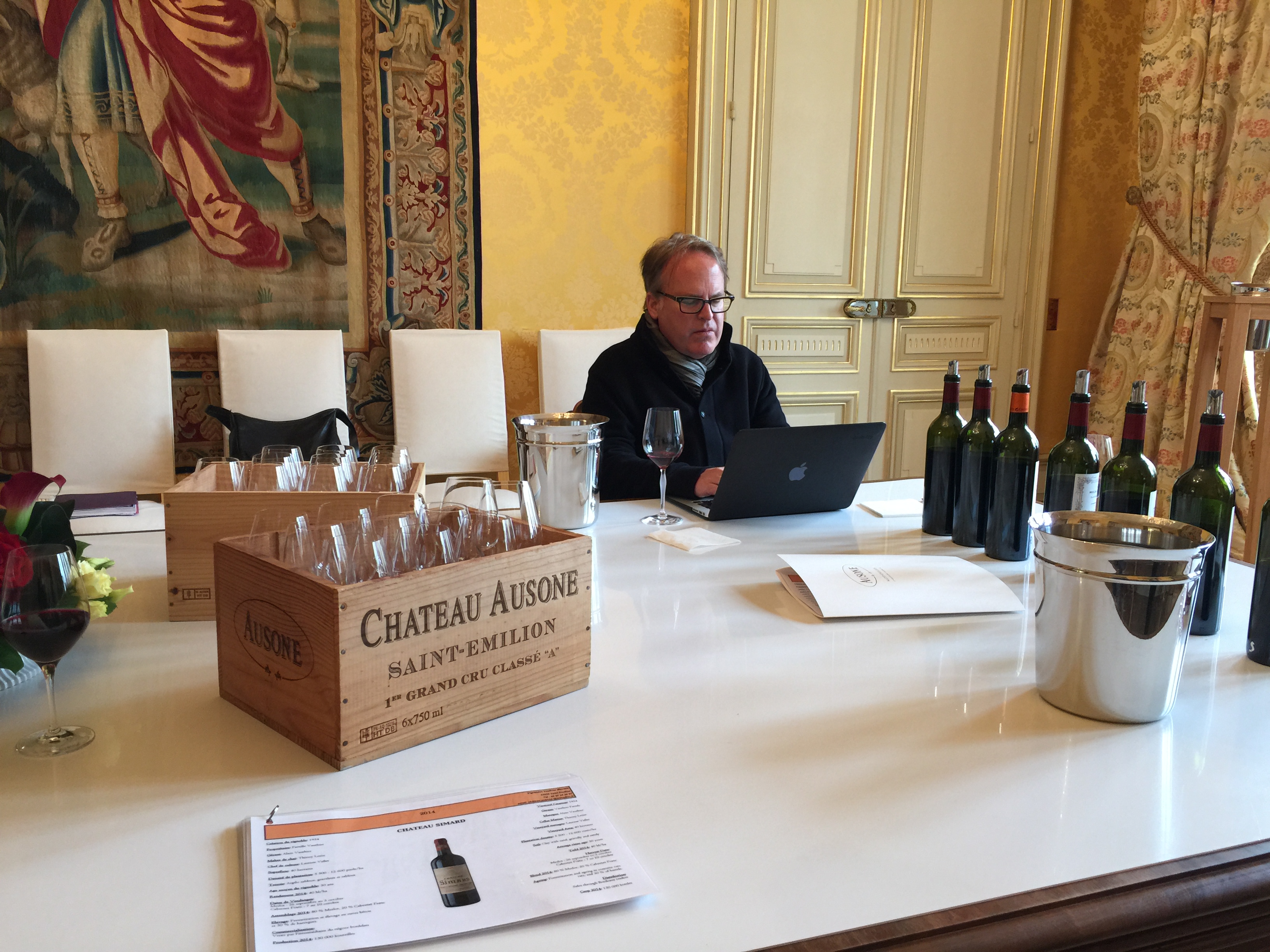Tasting Report: Don't Write Off The Right Bank In 2014
 Tasting 2014 Château Ausone en primeur
Tasting 2014 Château Ausone en primeur
No one should write off the Right Bank in 2014 for Bordeaux, despite the fact that the Left Bank made so many excellent wines. I tasted the top names of the Right Bank yesterday including Lafleur, Pétrus, Cheval Blanc and Ausone, and they were some of the best wines of my Bordeaux tastings, which already number close to 600 wines.
To be sure, the Right Bank had more rain in August than the Left Bank, and this affected the vines in a number of ways from more attacks from diseases such as botrytis to delayed ripening. "It all depended how you worked in your vineyards," admits Alexandre Thienpont, who made an outstanding Vieux Château Certan and who pointed out that it was the exceptional quality of his cabernet franc that made the difference.
In fact, all the top estates Bordeaux spent extra hours and money cutting back vine canopies and grape clusters to insure that what was left on their vines reached maximum ripeness. Even so, most of the top wines from the Right Bank are still about 14% alcohol by volume compared to top years which can comprise 15% or more. Yet they have a freshness, firmness and beauty that is extremely attractive.
 2014 Pétrus has marvellous potential
2014 Pétrus has marvellous potential
"We made wines that are neoclassical in style," says Baptiste Guinaudeau, whose family owns Pomerol's legendary Lafleur. It made one of the best wines of the vintage. He joked that the 2014 Lafleur was almost "Pauillac" in style due to its structure and intensity, and he was right. "The quality of the cabernet franc made the difference."
The 2014 vintage was indeed a cabernet year (both cabernet and franc) – provided that yields were kept down and grapes were harvested at the right time. Both varietals were less susceptible to botrytis and could benefit from the late sunshine and warm weather in September and October.
"The warm and sunny weather together with the wind actually dried the grapes and concentrated the sugars in the grapes," says Jean Philippe Delmas, the technical director of Haut-Brion and La Mission Haut-Brion as well as Château Quintus. "It's something unique to 2014. I was also particularly impressed by the cabernet franc in 2014. When it matures so well it's always a good sign."
 2014 Château d'Yquem is archetypal Sauternes
2014 Château d'Yquem is archetypal Sauternes
Michel Rolland, the doyen of winemakers in Bordeaux told me that much of the Médoc had picked its cabernet sauvignon before many producers even began picking on the Right Bank and Pessac-Léognan, which indicates the superiority of cabernet sauvignon in the vintage. "Nevertheless, there are many exciting wines on the Right Bank as well," he is quick to add.
Edouard Moueix, whose négociant family owns Trotanoy and La Fleur-Pétrus, also asserts that vineyards with soils and microclimates that were more precocious had an advantage. "We could pick at the right ripeness at particular sites," he explains.
And so, even though a number of my best wines I tasted so far came from the Right Bank, I am still calling 2014 a Left Bank year. Perhaps most revealing is the fact that in such appellations as St.-Julien, Pauillac and St.-Estèphe, so many lesser-ranked estates produced exceptional quality wines.
The roughly 300 new notes below also include a selection of white wines and the first of the Sauternes. The whites from the top estates of Bordeaux were compelling to say the least. Haut-Brion Blanc is breathtaking with a deepness of fruit that is like looking off the edge of the Grand Canyon or some other natural wonder. The 2014 d'Yquem, meanwhile, is archetypal Sauternes with botrytis intensity and electrifying acidity.
(PLEASE NOTE: The tasting notes below are not only Right Bank. They are all the wines that I have tasted and have not posted until the end of Frirday, March 28. - James)